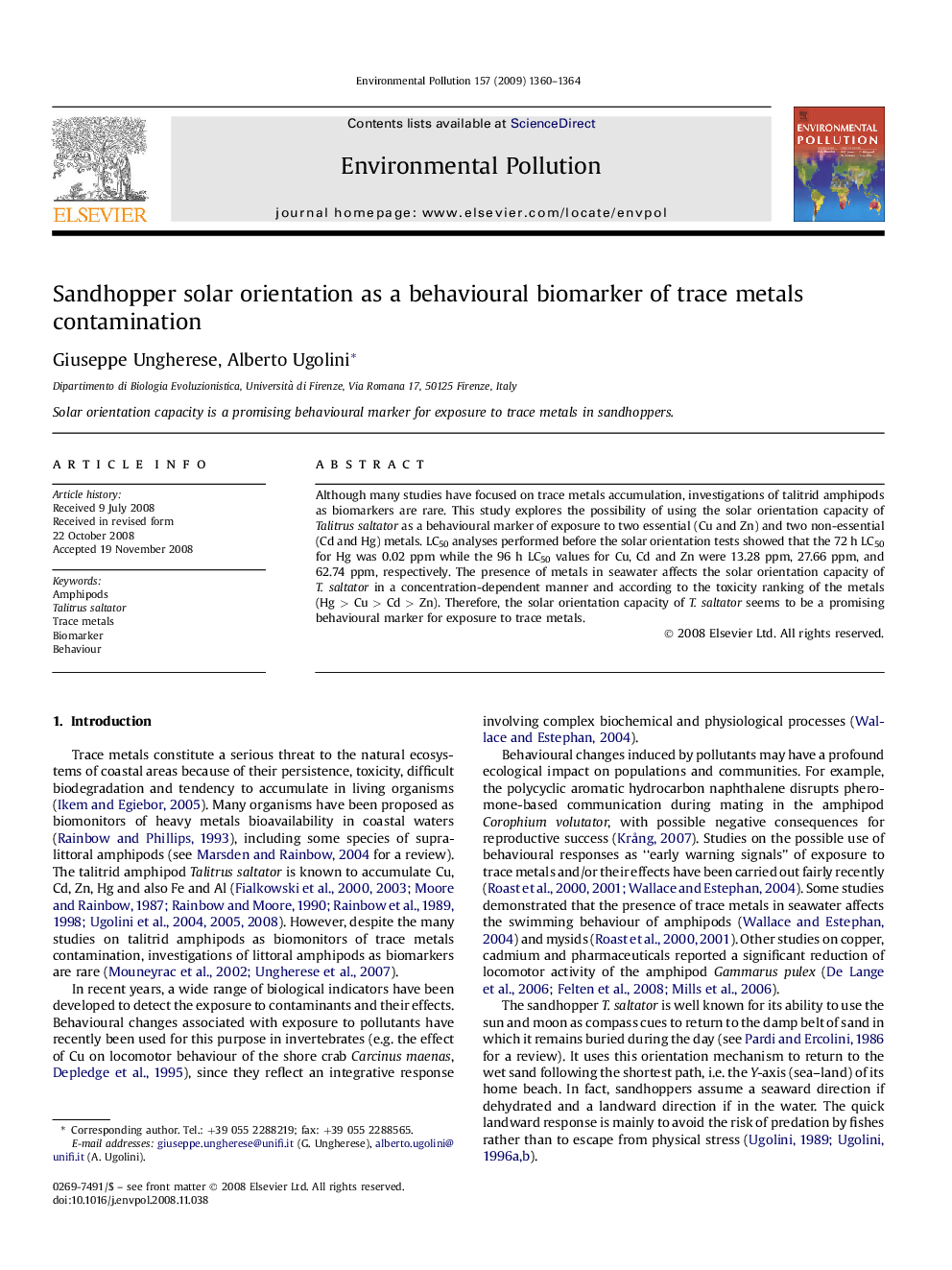| Article ID | Journal | Published Year | Pages | File Type |
|---|---|---|---|---|
| 4426546 | Environmental Pollution | 2009 | 5 Pages |
Although many studies have focused on trace metals accumulation, investigations of talitrid amphipods as biomarkers are rare. This study explores the possibility of using the solar orientation capacity of Talitrus saltator as a behavioural marker of exposure to two essential (Cu and Zn) and two non-essential (Cd and Hg) metals. LC50 analyses performed before the solar orientation tests showed that the 72 h LC50 for Hg was 0.02 ppm while the 96 h LC50 values for Cu, Cd and Zn were 13.28 ppm, 27.66 ppm, and 62.74 ppm, respectively. The presence of metals in seawater affects the solar orientation capacity of T. saltator in a concentration-dependent manner and according to the toxicity ranking of the metals (Hg > Cu > Cd > Zn). Therefore, the solar orientation capacity of T. saltator seems to be a promising behavioural marker for exposure to trace metals.
